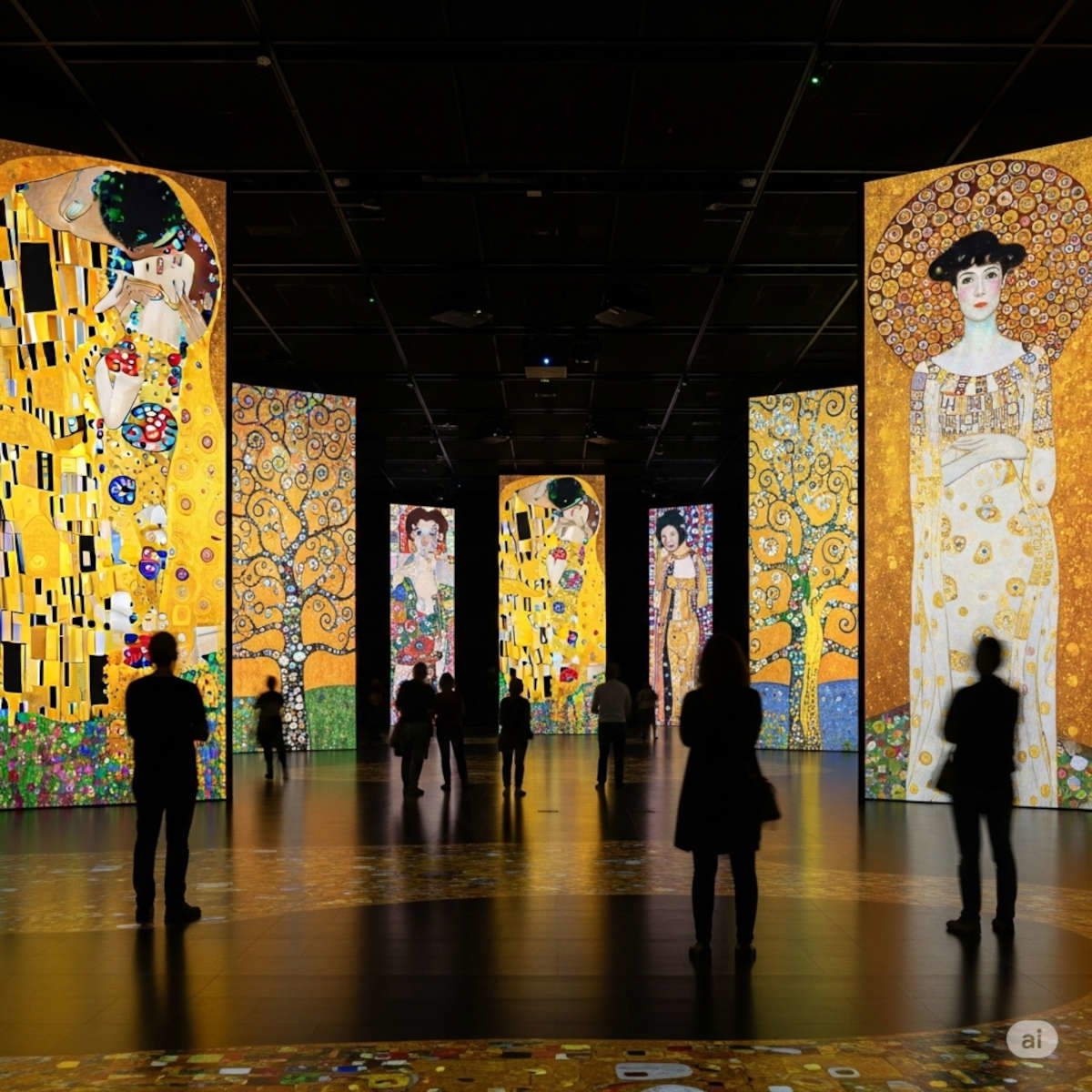There is one word that comes back, like a mantra, in Instagram press releases and sponsored carousels: experience. Immersive experience. Unique experience. Digital experience. In recent years, the art world (or rather: the art marketing world) has discovered a new totem to worship: the immersive exhibition. Van Gogh coming alive on the wall. Klimt fading into the vaults of a deconsecrated church. Frida Kahlo narrated by a voiceover, amid three-dimensional flowers and digital mirrors. They call them “immersive,” but they are often one-dimensional experiences: that of rapid consumption. And so the question becomes urgent: what are we really experiencing in these “exhibitions”? More importantly: what are we losing?
Immersive exhibitions present themselves as democratization of culture: “let’s bring art to everyone.” But bring to everyone what, exactly? Certainly not the work. Certainly not the artist’s thinking. Not the time, not the context, not the gesture. What is offered is a visual simulation of it, anelectronic shadow. The original work is not there: there is a projection of it, broken, animated, adapted to a video clip narrative language. It is a museum without works, a narrative without criticism, an aesthetic without risk.
The problem is not (only) technological. The problem is the reduction of art to content, to immediate sensory entertainment. In these experiences, one does not ask to observe: one asks to look. One does not ask to think: one asks to feel emotions. Complexity is translated into decoration. The time of art, which is also waiting, silence, tension, is leveled. Art history becomes interactive, neutral, defused storytelling. The model is that of the theme park, but with the rhetoric of cultural accessibility. You pay the ticket for an hour of perceptual suspension, take photos among the animated walls, leave saying “wow,” and maybe even buy a tote bag with sunflowers. The result is an aestheticizing drift that empties images of their critical power. In this sense, immersion is not deepening: it is anesthesia.

Yet, this aesthetics of immersion has taken root everywhere. Even in institutional language. Even in museums. It is often no longer about bringing the public closer to art, but about bringing art closer to the public-consumer. Art that does not “ask too much,” that does not question, that can be sold in packages, replicated in franchises. But what art is that which risks nothing? What does it mean to look at Rothko without the silence? What is left of Caravaggio without the darkness?
The "disaster" of immersive exhibitions is not in the fact that they are popular. It lies in the fact that they pass themselves off as exhibitions when they are shows. That they replace the authentic experience of the work, instead of accompanying it. That they convey the idea that art should always be exciting, dynamic, understandable, readable in three minutes.
It is a pedagogy of the fragment. A training in seeing without really looking. In the long run, the risk is cultural: an audience that has “seen it all” but has never encountered anything. Who knows the surface of things but can no longer stand in the depths. Who wants to be “immersed” because they have lost the sense of touching with their gaze. So what? It is not a matter of rejecting technology. Nor is it about regretting passive contemplation. It is a matter of restoring complexity toaesthetic experience, of distinguishing between entertainment and art. Of understanding that accessibility cannot mean trivialization. That true immersion happens when a work looks at you, challenges you, changes something inside you.
You don’t need to “showcase” Van Gogh to make him come alive: just really show what he saw, what he felt, what he wrote. You don’t need to animate Klimt to bring him closer: just read his gestures as the politics of desire. You don’t need to immerse the audience in a sea of light: you need to find ways to generate presence, relationship, tension.
Art does not always have to please. It does not always have to “work.” It has to open something. And if an immersive exhibition now and then can be a stimulus, a threshold, a first step, welcome. But let’s not make it the model, let’s not be fooled by beauty without risk. Because art, real art, asks us to emerge, not to be immersed. To get in touch, to remain vulnerable. And above all, it asks us to have time. That time that immersive exhibitions steal from us, in the name of immediate emotion that leaves no trace.
Warning: the translation into English of the original Italian article was created using automatic tools. We undertake to review all articles, but we do not guarantee the total absence of inaccuracies in the translation due to the program. You can find the original by clicking on the ITA button. If you find any mistake,please contact us.